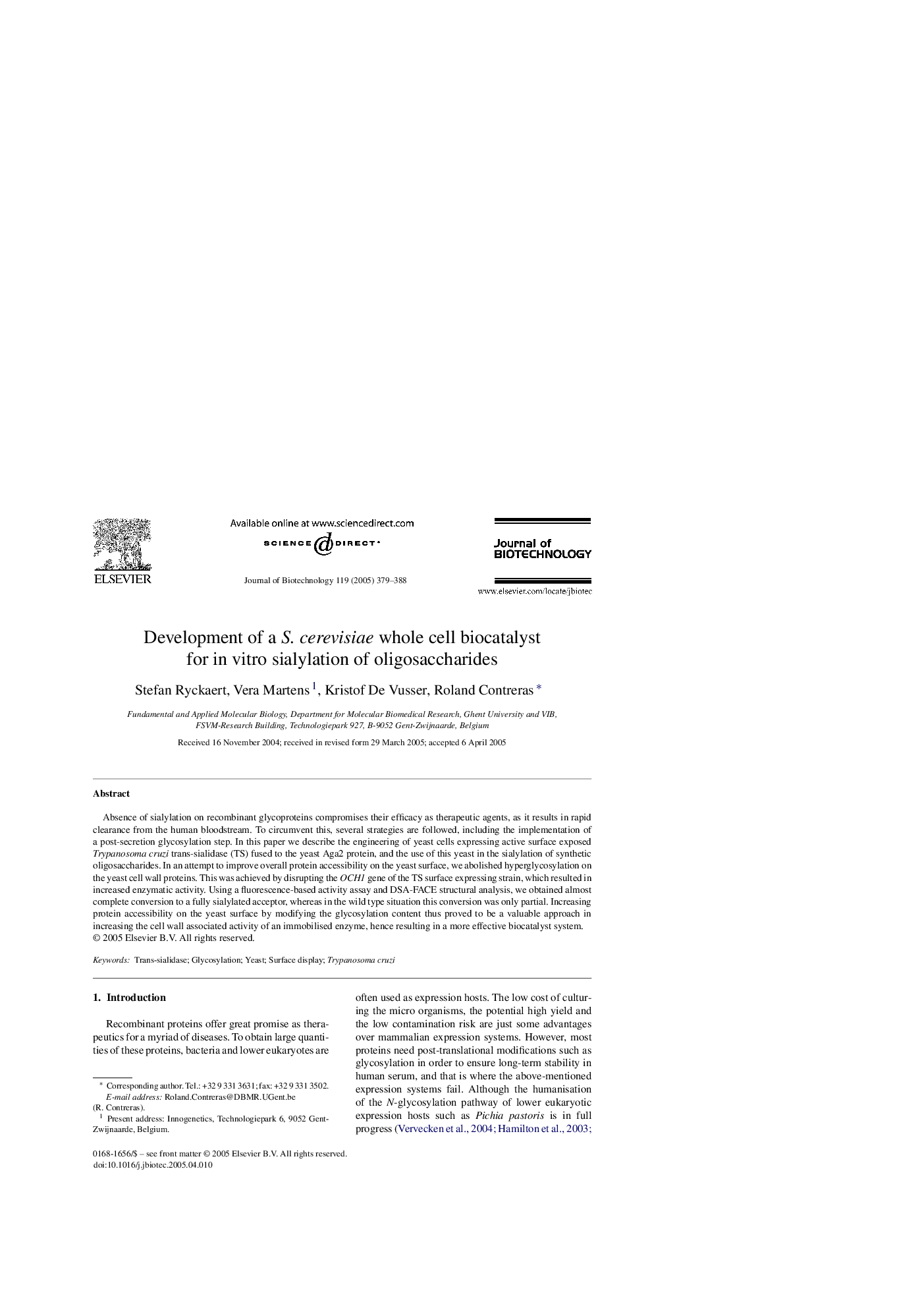| Article ID | Journal | Published Year | Pages | File Type |
|---|---|---|---|---|
| 9604271 | Journal of Biotechnology | 2005 | 10 Pages |
Abstract
Absence of sialylation on recombinant glycoproteins compromises their efficacy as therapeutic agents, as it results in rapid clearance from the human bloodstream. To circumvent this, several strategies are followed, including the implementation of a post-secretion glycosylation step. In this paper we describe the engineering of yeast cells expressing active surface exposed Trypanosoma cruzi trans-sialidase (TS) fused to the yeast Aga2 protein, and the use of this yeast in the sialylation of synthetic oligosaccharides. In an attempt to improve overall protein accessibility on the yeast surface, we abolished hyperglycosylation on the yeast cell wall proteins. This was achieved by disrupting the OCH1 gene of the TS surface expressing strain, which resulted in increased enzymatic activity. Using a fluorescence-based activity assay and DSA-FACE structural analysis, we obtained almost complete conversion to a fully sialylated acceptor, whereas in the wild type situation this conversion was only partial. Increasing protein accessibility on the yeast surface by modifying the glycosylation content thus proved to be a valuable approach in increasing the cell wall associated activity of an immobilised enzyme, hence resulting in a more effective biocatalyst system.
Related Topics
Physical Sciences and Engineering
Chemical Engineering
Bioengineering
Authors
Stefan Ryckaert, Vera Martens, Kristof De Vusser, Roland Contreras,
